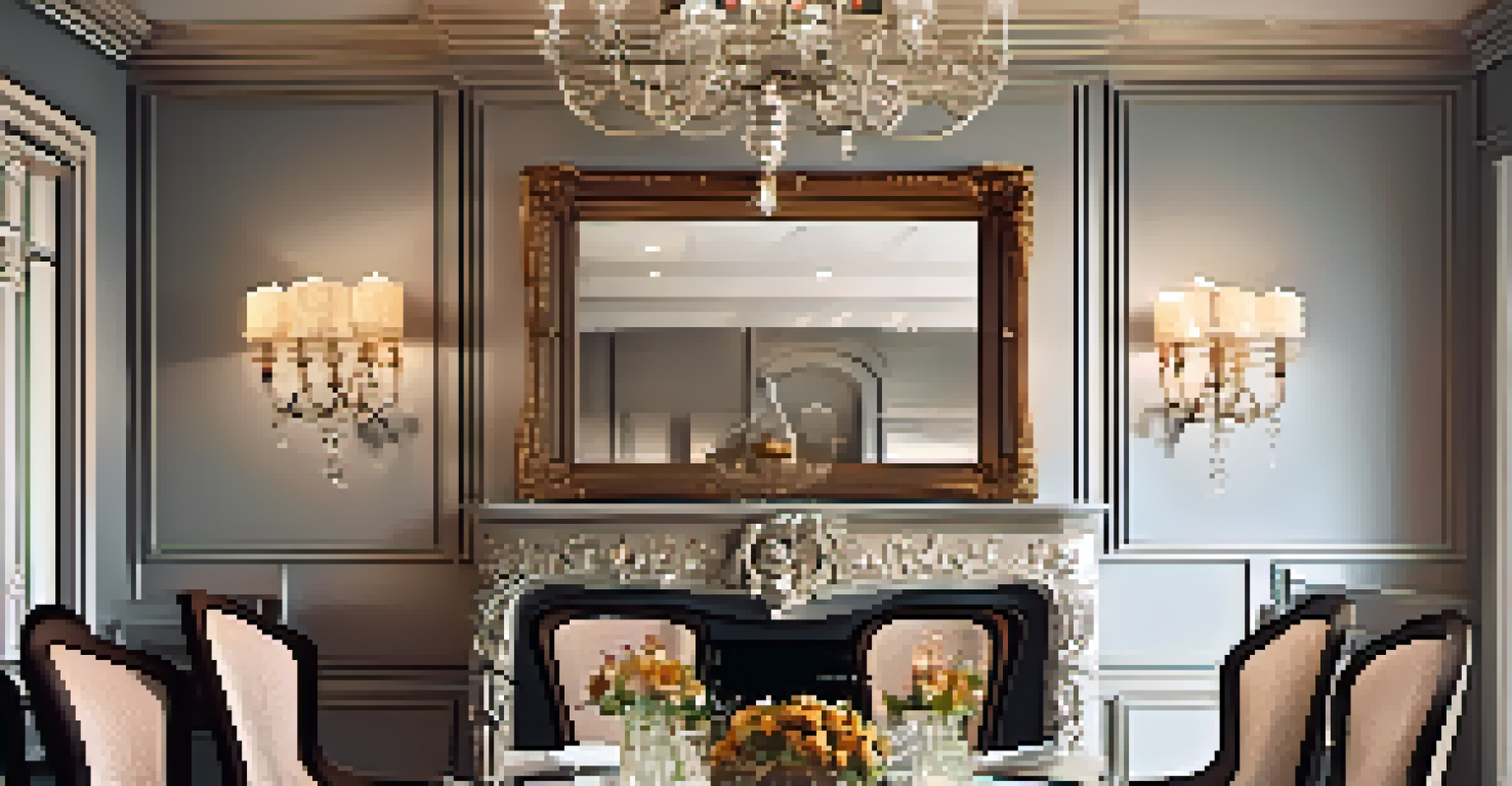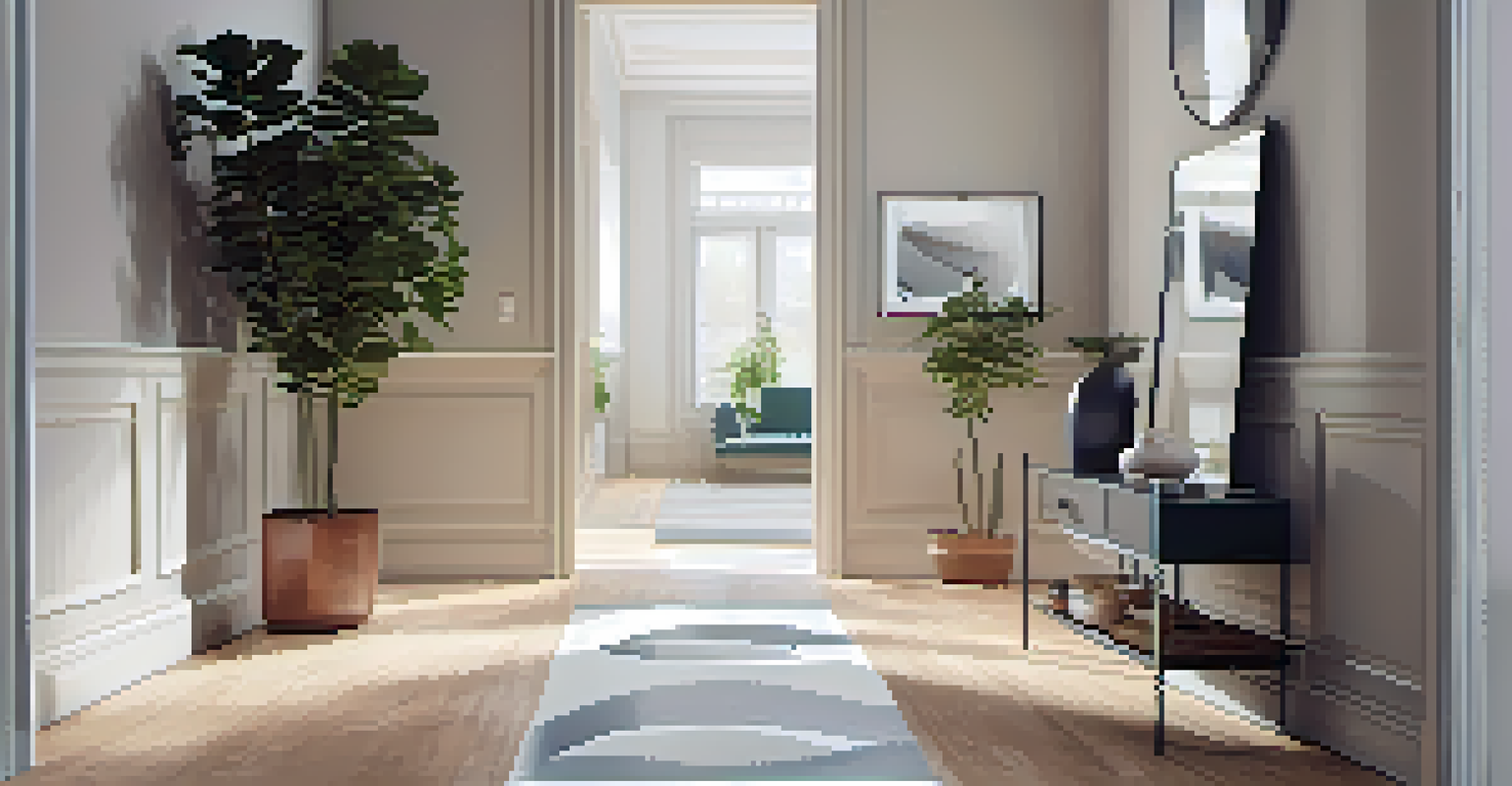The Power of Mirrors: Using Reflective Surfaces in Staging

Introduction to Reflective Surfaces in Staging
When it comes to staging a space, mirrors are often an underappreciated tool. These reflective surfaces can dramatically alter a room's ambiance and perception. Whether you're preparing a home for sale or just revamping your living area, understanding the power of mirrors can elevate your staging efforts.
Mirrors are the most interesting objects in a room because they can reflect what's outside and bring it in.
Mirrors work by bouncing light around a room, making it feel brighter and more open. This is particularly beneficial in smaller spaces where light can be limited. By strategically placing mirrors, you can create an illusion of depth and spaciousness that draws people in.
Moreover, mirrors can serve as striking focal points or artistic elements within a design. Their versatility allows them to fit seamlessly into various styles, from modern minimalism to vintage charm. The right mirror can not only enhance aesthetics but also influence how visitors experience the space.
Creating Illusions: The Magic of Depth and Space
One of the most enchanting qualities of mirrors is their ability to create the illusion of depth. When placed correctly, a mirror can make a narrow hallway appear wider or a cozy room feel more expansive. This visual trickery is essential in staging, especially when you want potential buyers to feel the space is generous and inviting.

Consider a small living room with limited natural light. By placing a large mirror across from a window, you can reflect that light and make the room feel brighter and airier. This not only enhances the space but also creates a welcoming atmosphere that invites further exploration.
Mirrors Enhance Light and Space
Strategically placed mirrors can brighten up a room and create the illusion of depth, making spaces feel more inviting.
Using mirrors to create depth also allows you to emphasize certain features within a room. For instance, a well-placed mirror can highlight a beautiful piece of artwork or a stunning view, drawing the eye and encouraging appreciation of the space's unique attributes.
Enhancing Light: Brightening Up Any Space
Light plays a crucial role in how we perceive a space, and mirrors can amplify that effect. By reflecting both natural and artificial light, mirrors can transform a dimly lit room into a vibrant one. This is particularly beneficial in staging, where first impressions are everything.
A mirror is not an object, but a doorway into another world.
Imagine a dining room that feels dark and uninviting. By adding a mirror on one wall, you can reflect the light from a nearby window and brighten the entire area. This small addition can make the space more appealing and create a warm, inviting environment for gatherings.
In staging, brighter spaces are often perceived as more welcoming and positive. By harnessing the power of mirrors to enhance light, you not only improve the room's aesthetics but also influence the emotional response of anyone who enters.
Mirrors as Decorative Elements: Style Meets Function
Beyond their functionality, mirrors also serve as stunning decorative elements. They come in various shapes, sizes, and styles, allowing you to express your personal taste while enhancing your space. A well-chosen mirror can be a statement piece that brings character and elegance to any room.
For instance, a vintage-style mirror with ornate detailing can add a touch of romance to a bedroom, while a sleek, modern mirror might suit a contemporary living area. The key is to select mirrors that complement your existing decor and enhance the overall aesthetic.
Mirrors as Decorative Elements
Mirrors serve not only a functional purpose but also add character and elegance, acting as statement pieces in home staging.
In staging, using decorative mirrors not only elevates the visual appeal but also encourages potential buyers to envision themselves in the space. A beautifully styled mirror can spark imagination and help create an emotional connection to the home.
Strategic Placement: Maximizing the Impact of Mirrors
The impact of mirrors largely depends on their placement within a space. To maximize their effectiveness, consider where they can best reflect light, views, or interesting features. A well-placed mirror can transform the feel of a room instantly.
For example, placing a mirror opposite a window allows it to capture and reflect natural light, brightening the space. Similarly, positioning a mirror to reflect a beautiful landscape or garden can create a seamless connection between the indoors and outdoors.
Additionally, think about the height and angle of the mirror. Hanging a mirror at eye level ensures it serves its purpose as a functional piece while also drawing attention. Proper placement not only enhances the room but also encourages guests to engage with the space more fully.
Creating Cohesion: Using Mirrors to Tie Rooms Together
Mirrors can also play a vital role in creating cohesion between different areas of a home. By using similar styles or finishes, you can ensure that mirrors harmonize with other design elements throughout the space. This creates a unified look that feels intentional and thoughtfully curated.
For instance, if your living room features modern decor with sleek lines, consider mirrors that match that aesthetic. By choosing complementary finishes, such as metallic frames or minimalist designs, you can tie the space together beautifully.
Strategic Placement is Key
The effectiveness of mirrors hinges on their placement, allowing them to reflect light and views to enhance the overall ambiance.
In staging, cohesiveness is key to leaving a lasting impression. When potential buyers see a well-connected flow between rooms, it fosters a sense of comfort and belonging, making them more likely to envision living in the space.
Conclusion: The Lasting Impact of Mirrors in Staging
In conclusion, the power of mirrors in staging cannot be overstated. They enhance light, create depth, and serve as stunning decorative elements, all while making spaces feel more inviting. By understanding how to use mirrors effectively, you can significantly improve the visual appeal of any room.
As you consider staging your home or space, remember to think creatively about where and how to incorporate mirrors. Their strategic use can transform a standard setup into an extraordinary experience for anyone who walks through the door.

Ultimately, mirrors are more than just functional items; they are powerful tools that can change the way we perceive spaces. With a little thought and creativity, you can harness their potential to make any room feel brighter, more spacious, and truly welcoming.